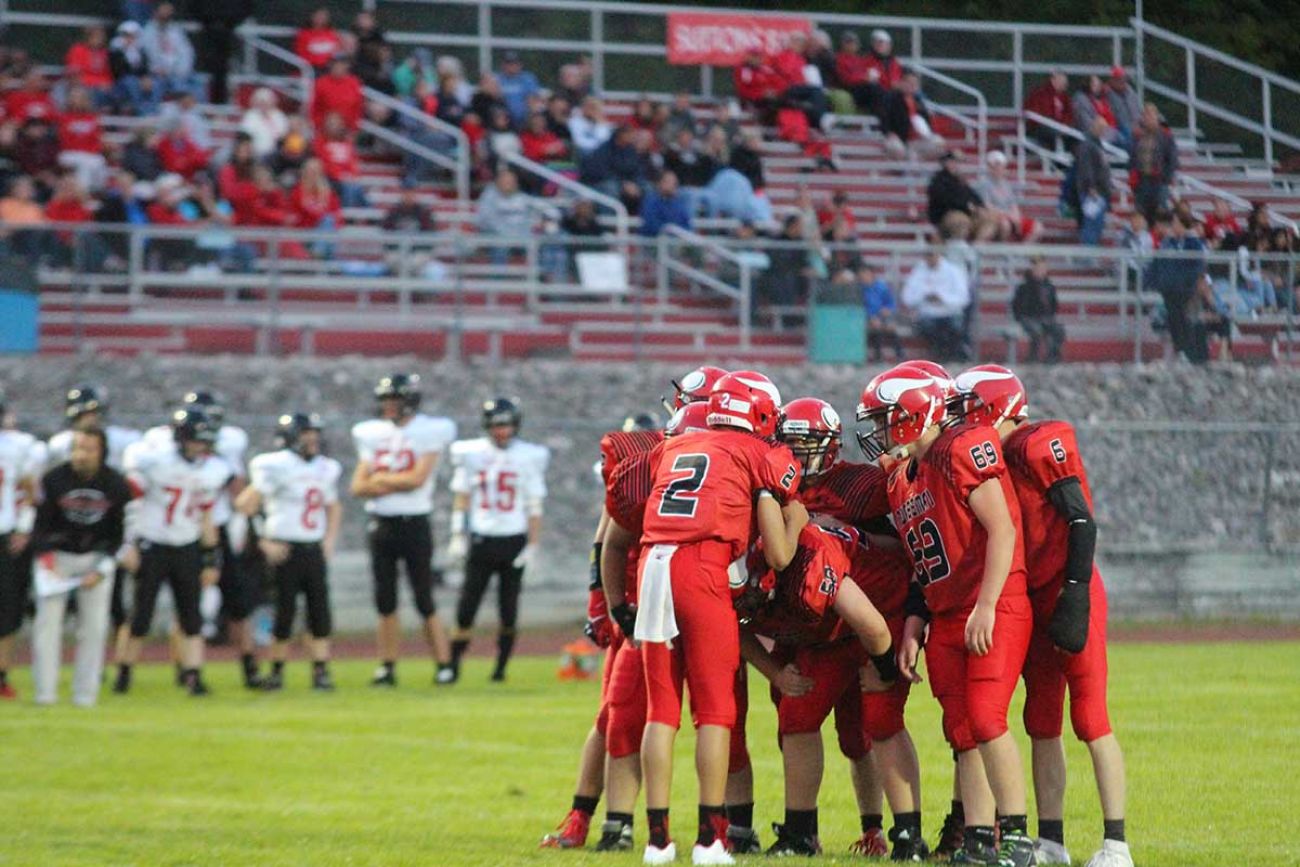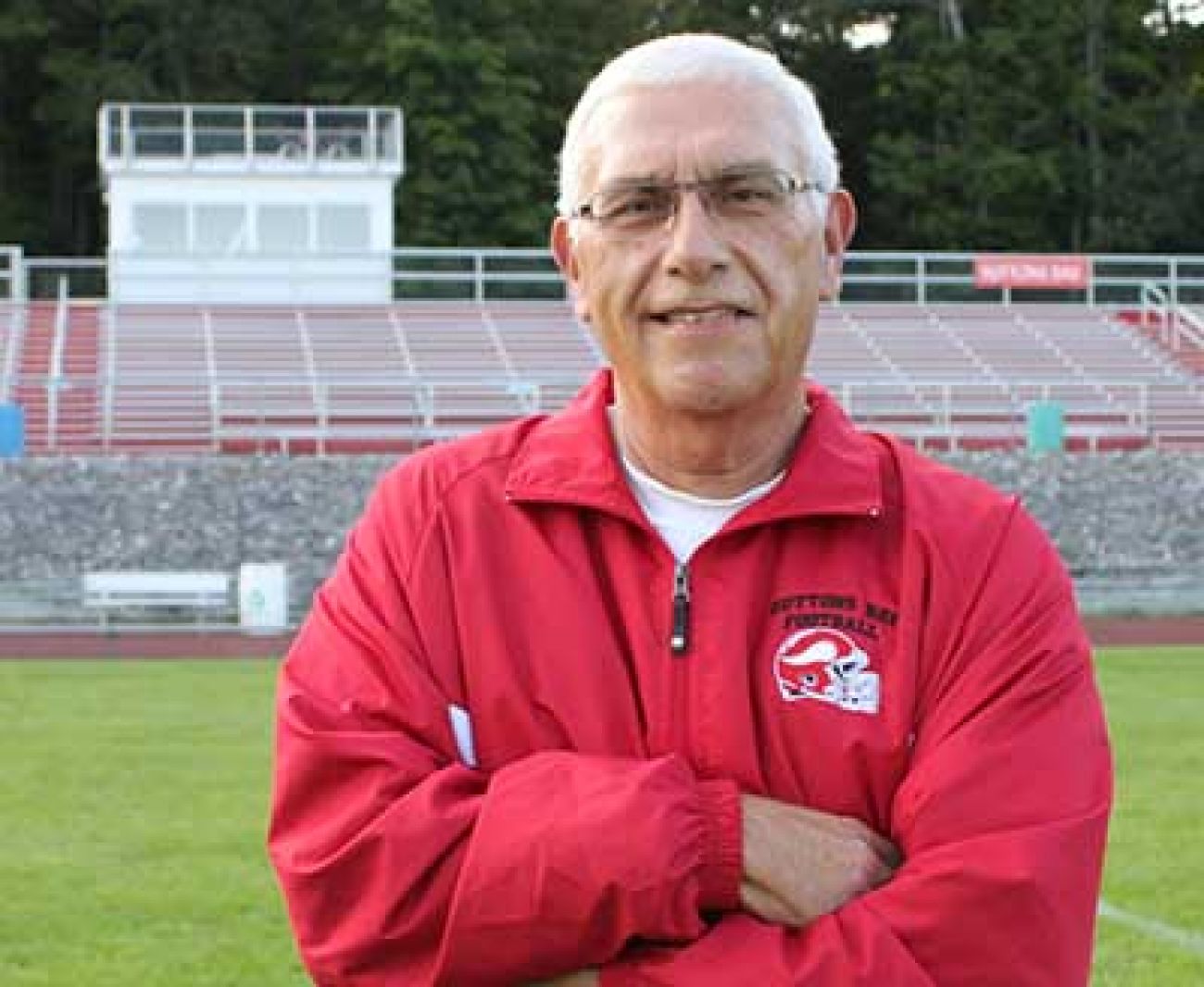Small-town Michigan high schools dump traditional football

From Pop Warner youth games to the Spartans and Wolverines to the Detroit Lions, this state is crazy for football.
So it may come as a surprise that Michigan is a national leader in the number of high schools that are dropping traditional 11-player football. It’s happening in (mostly) rural communities across the state, where declining student enrollment, dwindling student interest in football – and rising fears over concussions – are forcing smaller schools to make tough choices.
So it is at Suttons Bay High School, north of Traverse City.
It canceled the remainder of its 2016 season after it limped out of its second game – a 37-0 loss – with just 11 healthy players. That’s the minimum needed to field a full team on offense or defense, though it would require those players to play on both sides throughout the game. The Norsemen, who entered the game with 14 players, lost one to a knee injury, another to a sore ankle and a third to a possible concussion.
“Of course it’s disappointing. It’s football. It’s part of the tradition,” Athletic Director Doug Periard said at the time.
That left Suttons Bay with a difficult decision: What to do with football?
For a program that had won five conference titles going back to 2003 – the most recent in 2014 – and reached the state finals in 2004, it was not an easy call. Pride in football is stitched into this community’s sense of self.
After weeks of deliberation, Suttons Bay elected to compete in eight-player football this year – becoming the 61st Michigan high school to do so. Eight years ago, there were only eight such teams. By comparison, there are 555 Michigan high schools competing in traditional 11-player football this season; but that’s 84 fewer than eight years ago.
“I could see this happening more and more around the state,” Periard told Bridge Magazine.
Smaller is Bigger
Since its introduction in 2009, eight-player high school football teams have spread across the state. The number of teams by year:
- 2009 8
- 2010 20
- 2011 14
- 2012 16
- 2013 36
- 2014 33
- 2015 47
- 2016 60
- 2017 61
Source: National Federation of State High School Associations
The numbers suggest Periard is right. From 2012 to 2016, Michigan shed 57 11-player programs – more than any other state, according to data gathered by the National Federation of State High School Associations.
Many of the schools that switched to eight-player football – like Suttons Bay – are small, rural and did so because they saw no other choice.
The changing football landscape reflects a broader reality in much of rural Michigan: Over the past decade, these regions have lost jobs and residents faster than the rest of the state. Inevitably, that trickles down into the size of high schools and their football teams.
Well over half of the eight-player teams in Michigan are located in sparsely populated areas of the Upper Peninsula, the Thumb, the northern Lower Peninsula and along the south central border with Indiana. That roughly tracks huge population losses across northern Michigan in the past decade. Places like sparsely populated Ontonagon County in the U.P., which lost nearly 13 percent of its population over that period.
Perhaps not coincidentally, Ontonagon Area Senior High School turned to eight-player football in 2014, as its enrollment fell from 238 in 2004 to 112 in 2017.
Over the past seven years, the number of Michigan high school students taking part in 11-player football dropped by more than 7,000, or 16 percent. That’s more than three times the 4.6 percent average decline for the nation. It also outpaces the 12 percent overall decline in student population at these schools over this period.
Fewer players
The number of participants in 11-player football in Michigan fell by more than 20 percent over 10 years
- 2007 46,395
- 2008 45,257
- 2009 43,678
- 2010 43,446
- 2011 42,743
- 2012 41,181
- 2013 40,006
- 2014 40,003
- 2015 38,592
- 2016 36,571
Source: National Federation of State High School Associations
John Johnson, spokesman for the Michigan High School Athletic Association, insisted there’s no reason to panic over the future of the sport.
“The sky is not falling,” Johnson said.
Still, Johnson conceded the falloff in participation “is something we have a concern about. It concerns the MHSAA. It concerns the football coaches’ association.”
Johnson said the MHSAA and football coaches around the state have worked hard to make the game safer, by limiting contact in practice to 90 minutes a week and by stressing safer tackling techniques (Other states, including football-crazy Ohio, have gone even further to protect player safety, limiting contact in practice to 60 minutes a week).
MORE COVERAGE: Despite concussion fears, Michigan allows long hours of prep football hitting
Johnson maintained the game “is safer than it’s ever been.”
Nonetheless, Johnson said, widespread publicity over the risks of concussion in football has had an impact on both parents and potential participants.
“Without question, all of information that’s out there, the good, bad and ugly about concussion does affect people’s mindset,” Johnson said. “People are concerned.”
Johnson noted that many smaller districts like Ontonagon have been hit even harder by declining enrollment, which can leave football programs with sparse numbers and little margin for injury. He said some students are choosing other sports or simply deciding not to go out for football.
At Suttons Bay, high school enrollment plunged by more than 50 percent in 10 years, from 342 in 2006 to 158 in 2016.

When a team has only 14 or 15 players to start, Johnson said, coaches can soon face tough choices.
“You are always a couple of injuries from doing something you don’t want to do,” he said. “Asking 11 or 12 players to play the duration of a game – that’s not safe.”
But Johnson noted that despite the falloff in players, the number of football programs in the state has remained relatively stable. There are 616 high school programs in 2017 – counting 11-player and eight-player teams – nearly as many as 2007, when there were 630 football programs, all of them 11-player.
By turning to eight-player teams as an option in 2009, the MHSAA was following a path in place for decades in states like Colorado, Nebraska and Kansas, where small rural schools simply could not support traditional football. Kansas has been playing the game since 1956, while Nebraska played its first eight-player games in 1951.
The history of six-player football – still contested in several states – goes back to the 1930s. According to Johnson, six-player football was also a part of the Michigan football landscape back in the 1930sl, growing to about 50 schools by 1950. Johnson said that transitioned to eight-player football, which was played in different parts of the state before ending in the U.P. in the early 1970s.
Twenty miles northwest of Cadillac, Mesick Consolidated Schools moved this year to eight-player football after years of fielding small rosters and struggling to compete. High school enrollment had fallen by nearly 40 percent from 2006 to 2016, from 300 to 185.
The decision came after its high school team recorded its fifth 1-8 record over the last six years. Its only victory last year was a forfeit win over Suttons Bay after it cancelled the remainder of its season.
“It had been up for discussion for years,” recalled former Mesick athletic director Rene LaFreniere, who presided over the decision in 2016 to make the switch.
LaFreniere said there was little community opposition to the move, but rather, recognition that it might be the only way forward.
“I think this is a pretty good option for small schools, so they can feel like they are still competing,” LaFreniere said.
Eight-player teams compete on the same 100-yard field used with 11-player squads, except the field is 13 yards narrower. The rules are virtually identical. The biggest difference is that, with five players required on the offensive line of scrimmage, there’s room for just a quarterback and two other players in the backfield or lined out wide.
Having just eight players on defense means an offensive back who breaks through the line of scrimmage has a better chance of scoring, since there may only be four players in the entire defensive backfield. Higher scoring games are a norm.
Still, said LaFreniere, “Everything basically looks the same. It’s still football.”
Mesick football coach Joshua Crocker said 13 players turned out this year for the eight-player team. That wouldn’t have been enough to support an 11-player team, though he suspects more would have showed up had it been a traditional team. Crocker recalled that several years ago his team finished a game with just 12 players.
Mesick opened the season at Central Lake High School northeast of Traverse City, a 65-mile road trip to play a team also fielding it first eight-player squad. It turned into a scoring fest, with Central Lake winning 64-38.
While they lost, Crocker said players were able to joke that they were setting records virtually every play.
“They could say it’s the most points ever scored (by Mesick) in an eight-man game,” Crocker said.
“Now we just have to get better on defense.”
The conversion to eight-player football does include a few small urban high schools, like Bay City All Saints. Bay City made the change this year after high school enrollment fell below 100 students for the first time in its history.
As with Suttons Bay, it was an uneasy passage at a school with a rich athletic tradition and trophies for 17 state championships in a variety of sports.
Coach Nick Barton confessed in an account reported in Mlive.com that he was taken aback by the decision to downsize football.
“When I first heard, it kind of blew me away, to be honest,” he said. “There’s that stigma that eight-man football is not really football. I’m not going to lie, I had that little piece in my mind as well.”
All Saints lost its Aug. 25 eight-player debut against football power Deckerville Community High School in The Thumb, 42-6.
Still, Barton is not discouraged.
“The players seem to like it,” Barton told Bridge. “For a lot of the schools that want to keep that Friday night alive, this is great football.”
In Suttons Bay, long-time resident Charles Dashner said the Friday night football game has long been a big deal in this small community at the edge of Lake Michigan. Dashner has volunteered for the program more than 30 years, as a spotter and for 25 years as the game public address announcer.

“Friday night, that’s a social event for a small town. There’s a chili supper. The stands were always pretty full. A small town does have pride in their school,” he said.
Dashner recalled that when Suttons Bay cancelled its season in 2016, there was ominous talk around town about football.
“There were people saying, ‘This is it.’”
Dashner wondered himself, given declines in school enrollment and on its football team. He said he’d seen skilled trades workers leave town for jobs elsewhere in Michigan or out of state during the Great Recession.
But Dashner said he’s become a convert to the new game that just might save football for his community. He watched as the Suttons Bay Norsemen won their opening game against visiting Bear Lake High School, 61-20.
Win or lose, Dashner said, he’s glad for the players.
“The kids,” he said, “didn’t want to see football go away.”
See what new members are saying about why they donated to Bridge Michigan:
- “In order for this information to be accurate and unbiased it must be underwritten by its readers, not by special interests.” - Larry S.
- “Not many other media sources report on the topics Bridge does.” - Susan B.
- “Your journalism is outstanding and rare these days.” - Mark S.
If you want to ensure the future of nonpartisan, nonprofit Michigan journalism, please become a member today. You, too, will be asked why you donated and maybe we'll feature your quote next time!

